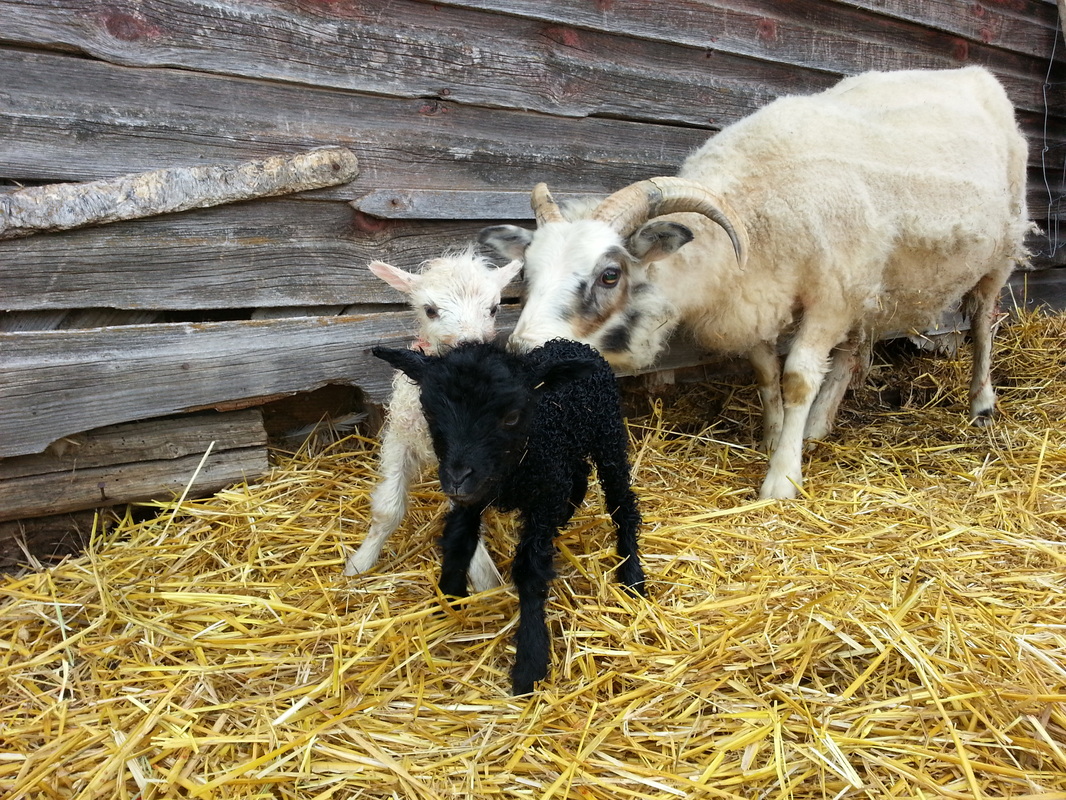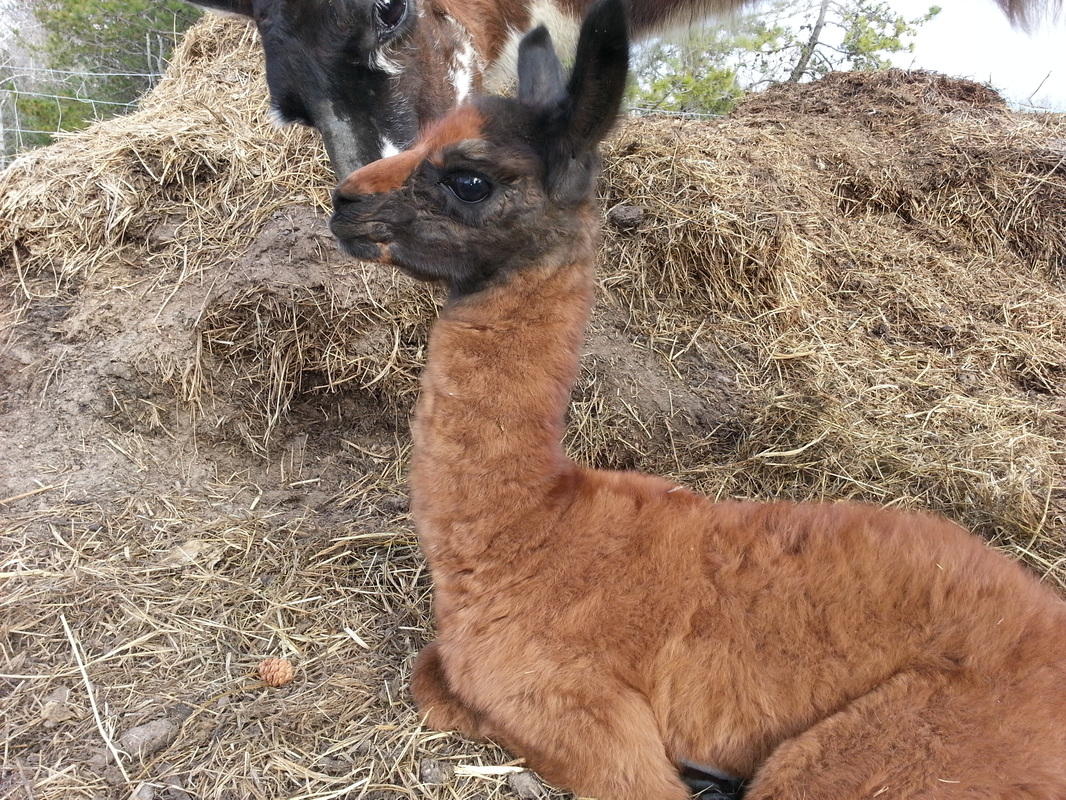 the Nygora buckling, a Nigerian Dwarf mother with half blue eyes and an Angora father. Sweet!
the Nygora buckling, a Nigerian Dwarf mother with half blue eyes and an Angora father. Sweet! Then in the early afternoon, I was surprised by Leda, a young ewe, when she delivered twin boys, one black and one white, but they weighed only about 2.5 and 3.5 pounds each. It is not unusual for Icelandic ewes to birth twins and even triplets, but she is young, only a year and a bit herself, so this was quite difficult for her. She had the boys cleaned up and nursing quickly, then moved them inside for the evening. In a day or two, when she feels they are aware enough , she will bring them back to the flock. The twin girls born two days earlier have already joined the adults, though Mamma Red keeps a close watchful eye on them.
Then late this evening, Taffy did not come out of the small shelter when I checked the goats. It was nearly dark and I thought for a moment I saw something small and white near her. Sure enough, there was a tiny blue eyed buckling, half Angora and half Nygerian. He appears to be healthy and robust. I will check on him before bed to be sure he has nursed. Sometimes new mothers are not quite sure what that is all about. If his tummy is full and his mouth is warm, he and she will have figured all that out. Nigerian Dwarf dairy goats are great, but Angoras are terrible, because the mothering instinct has been forsaken for the best fibre. These babies are only the beginning of an estimated 60 lambs and goats that will be born on the farm this year. It is the most exciting and heartbreaking time. Sometimes nature takes its course and for whatever reason a young one does not make it. The mother cries and so do I, but for the most part, we have been extremely fortunate at The Fat Ewe Farm and the babies and mothers have gone on to see tomorrow. How blessed I am to be the stewardess in all of this. It is pure bliss and I am grateful to our Creator that I can share in the new lives. Thank you.



 RSS Feed
RSS Feed